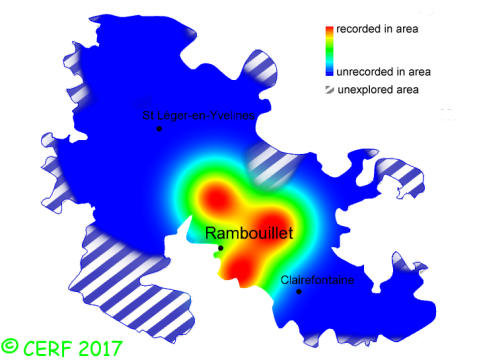|
Hygrocybe punicea (Fr.:Fr.) P. Kumm.
|
common name(s) : Crimson Waxcap
New classification: Basidiomycota/Agaricomycotina/Agaricomycetes/Agaricomycetidae/Agaricales/Hygrophoraceae
Former classification: Basidiomycota/Homobasidiomycetes/Agaricomycetideae/Tricholomatales/Hygrophoraceae
[sub-genus:Pseudohygrocybe section:Puniceae ]
synonyms: Hygrophorus puniceus
(unconfirmed synonyms: Godfrinia punicea)
edibility : edible
|
|
|
The cap is red then orange; its margin is fissured.
The cap surface is smooth, viscid or sticky.
The stem is red or yellow, without ring.
The flesh is white towards base, to yellow towards top, unchanging; its taste is mild; the odour is faint;
its texture is fibrous.
The gills are yellow then red, adnate, distant .
The spore print is white. This species is saprophytic.
It grows on the ground, in meadows and unfertilized fields, sometimes also in sand dunes and grassy clearings, on a rather calcareous soil.
The fruiting period takes place from July to December.
| Dimensions: | width of cap approximately 8 cm (between 2 and 13 cm) |
| | height of stem approximately 9 cm (between 3.5 and 15 cm) |
| | thickness of stem (at largest section) approximately 15 mm (between 6 and 30 mm) |
Chemical tests : none.
Distinctive features : the edge of gills remains yellow; grooved stem
Hygrocybe punicea is rare and localised in the forest of Rambouillet, and is occasional, more generally speaking
.
|  | | Above : distribution map of Hygrocybe punicea in the forest of Rambouillet |
|
page updated on 14/01/18